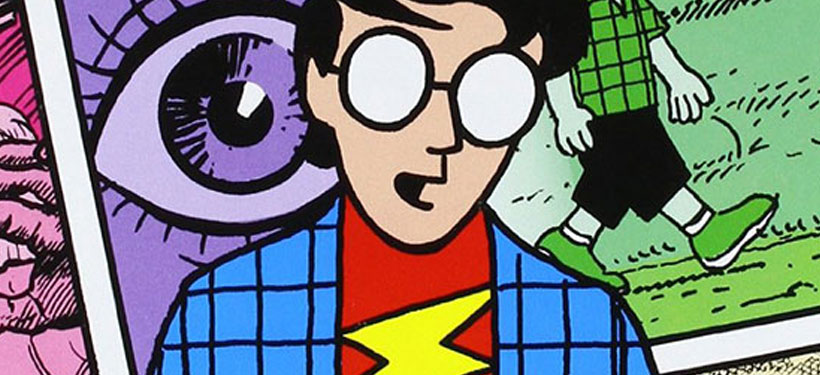Understanding Comics
04 Nov 2019 - Jake Sherwood
 Understanding Comics
Understanding Comics
Understanding Comics
Comics had a big influence on me as a kid. I read them, collected them, drew the characters and created my own.
My parents have been beging me to take my 2 giant comic storage boxes off their hands for years.
Even with all that I had never thought about comics in the depth explained in Understanding Comics.
The aspects of closure, the gutter, and using the size of the frame(s) to express time were all things I understood visually but never really thought about.
Closure is described as “observing the parts but perceiving the whole.” Meaning a frame or a few frames of a comic can tell a part of a story without detailing every moment. As readers we are able to fill in the blanks to complete the story. This was interesting concept to realize. Again something I had experienced from years of reading comics but something that I never stopped to dissect what was actually going on.
Some describe the gutter as an “invisible messenger.” Gutters are essentially empty space but can still convey a message with the participation of the reader. The gutter can be used with closure to complete a scene or story.
There is no literal “end” but the reader can deduce the end to the scene with the change over to the next scene / frame after the gutter.
The way Understanding Comics details out the tools for illustrating time, was also very interesting. Whether it be with multiple frames, frame size, or the type of transition. It was also cool to see the somewhat consistent pattern in how comics, regardless of subject matter, select the type of transitions used to convey the story. Most American comics gravitate towards using action to action, subject to subject and scene to scene transitions. While Japanese comics have a bit heavier occurrence of aspect to aspect.
The simplified definition of comics as being “sequential art” and illustrating how that type of story telling has been used for centuries was cool.
Comics sometimes are viewed as a lower tier or childish type of art, but their method of story telling has withstood the test of time.
I also connected with the idea that cartooning could be described as “amplification through simplification.”
With a background in illustration, I’ve never been much of a realist. My drawings are usually somewhat weird and very stylized. So I like the thought that, that could actually be amplifying the viewers connection with my work.
As a whole, Understanding Comics has helped me understand larger concept of how and why comics work. And the power of the medium for story telling.
Now I want to go draw some comics and take the Comics class next semester!